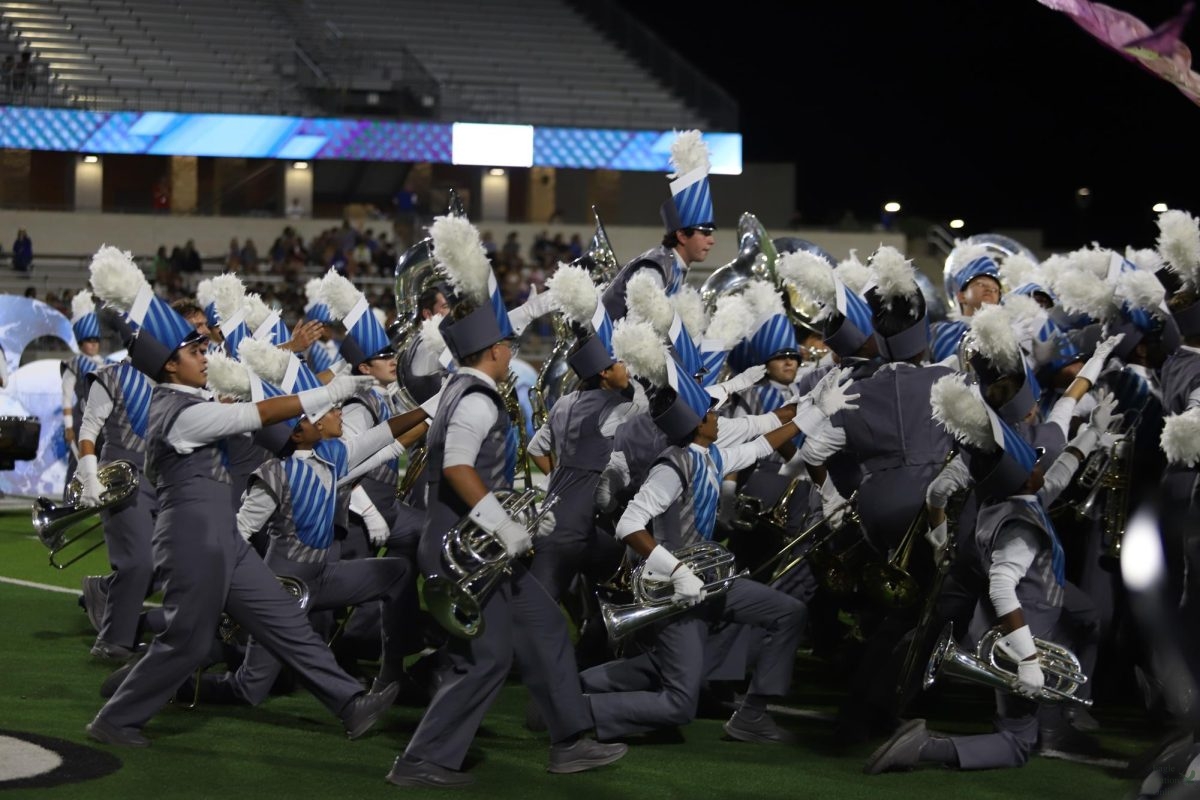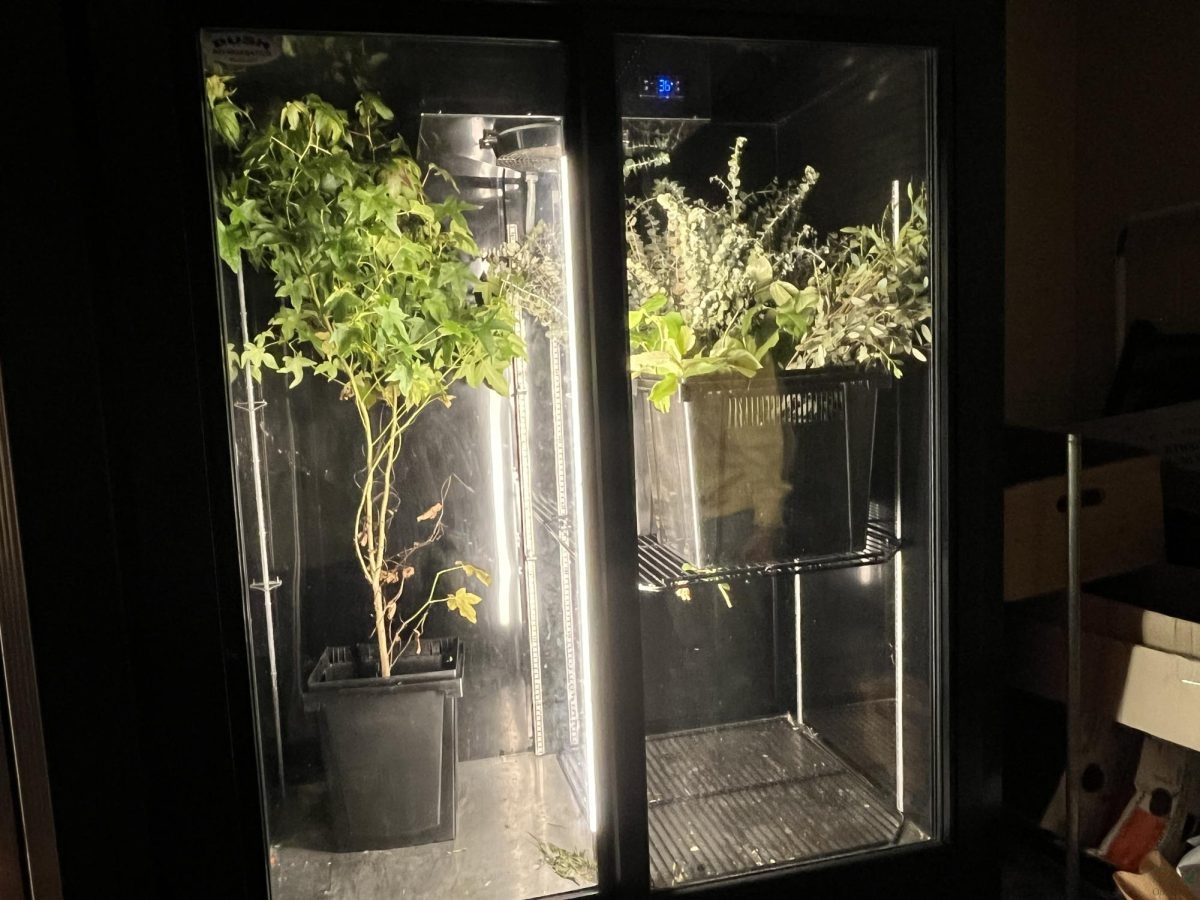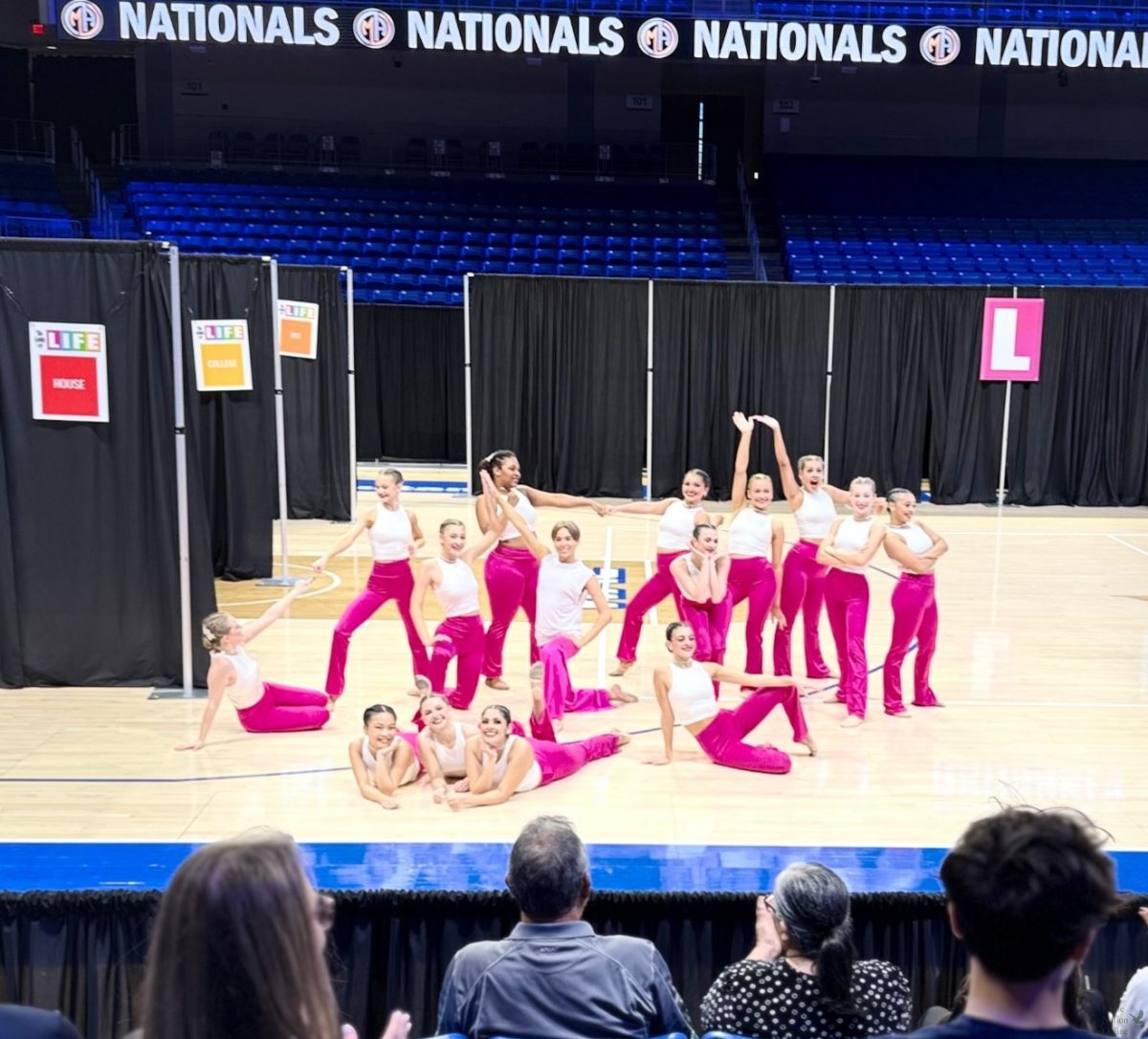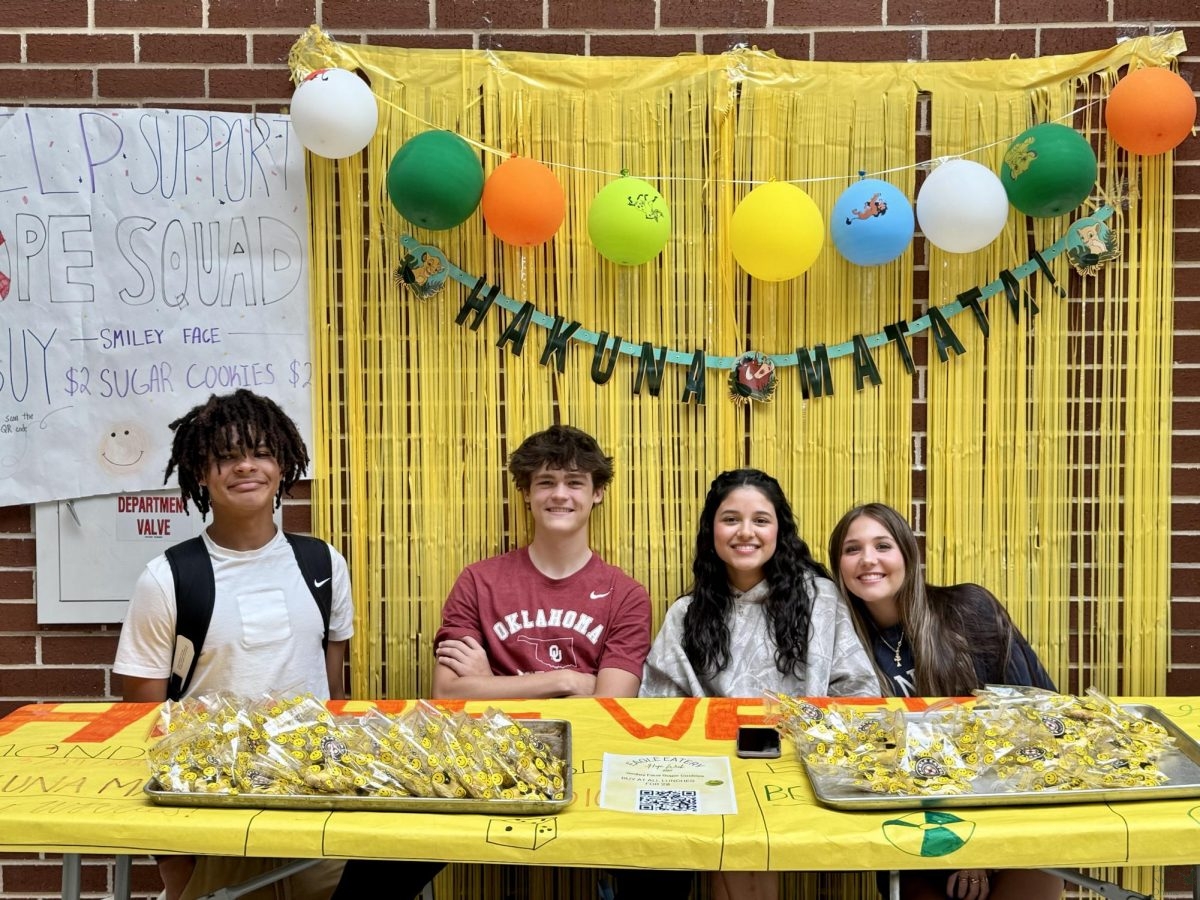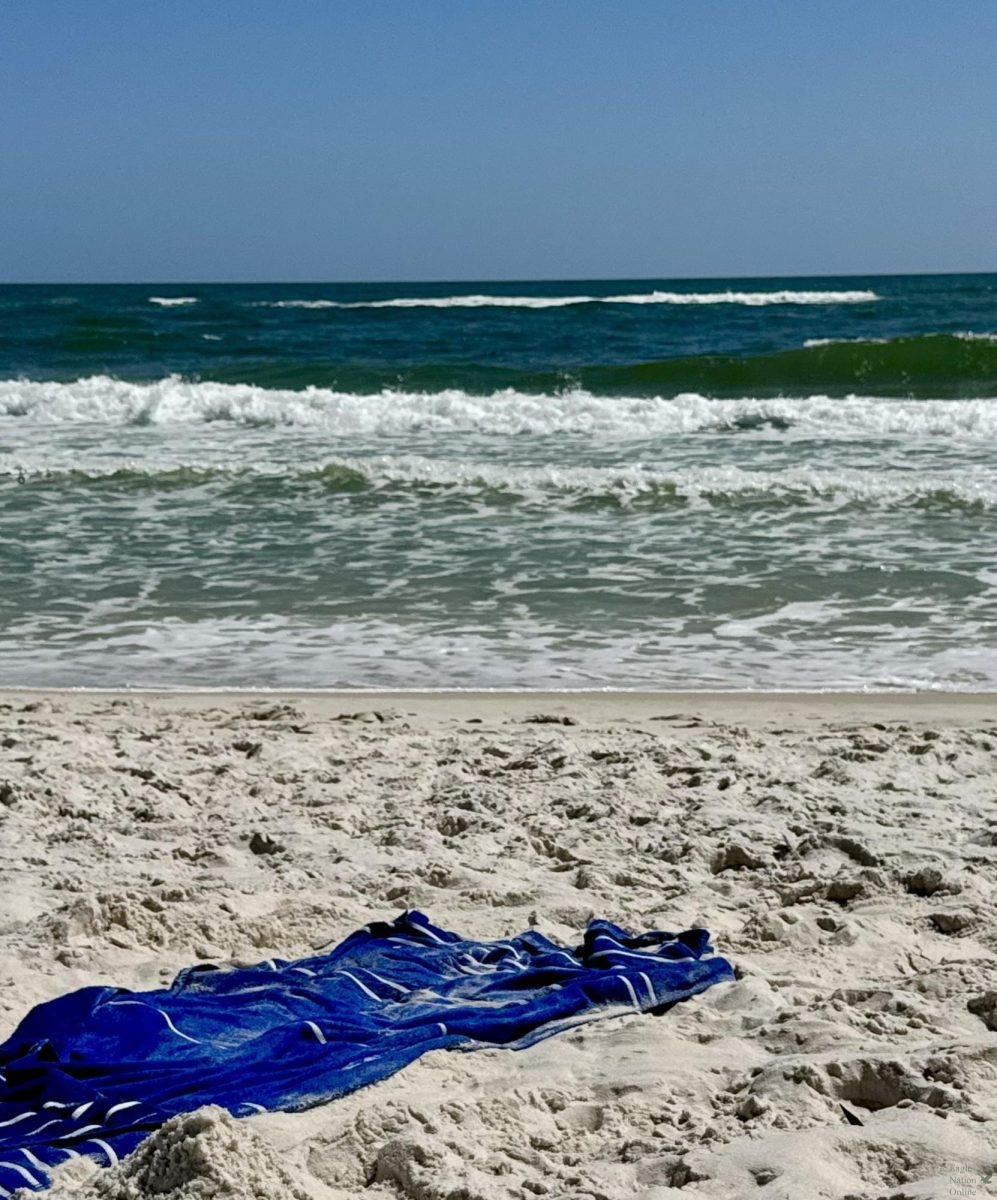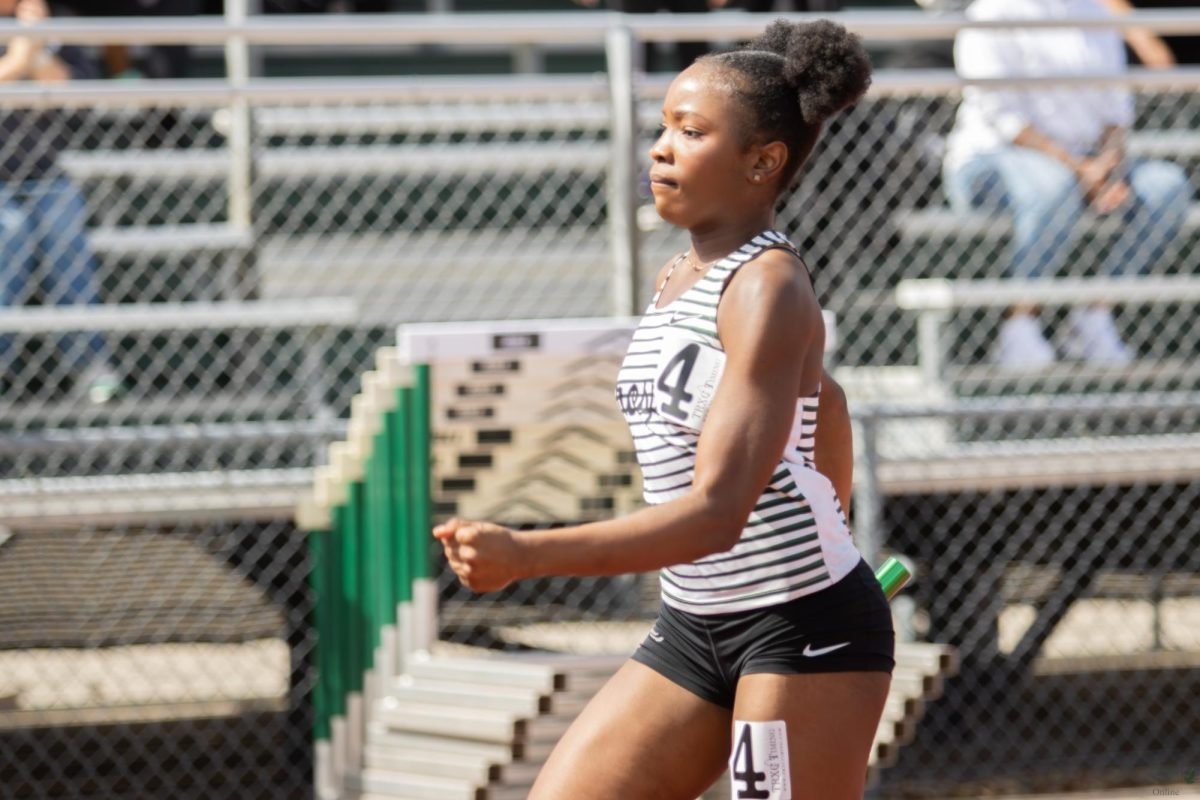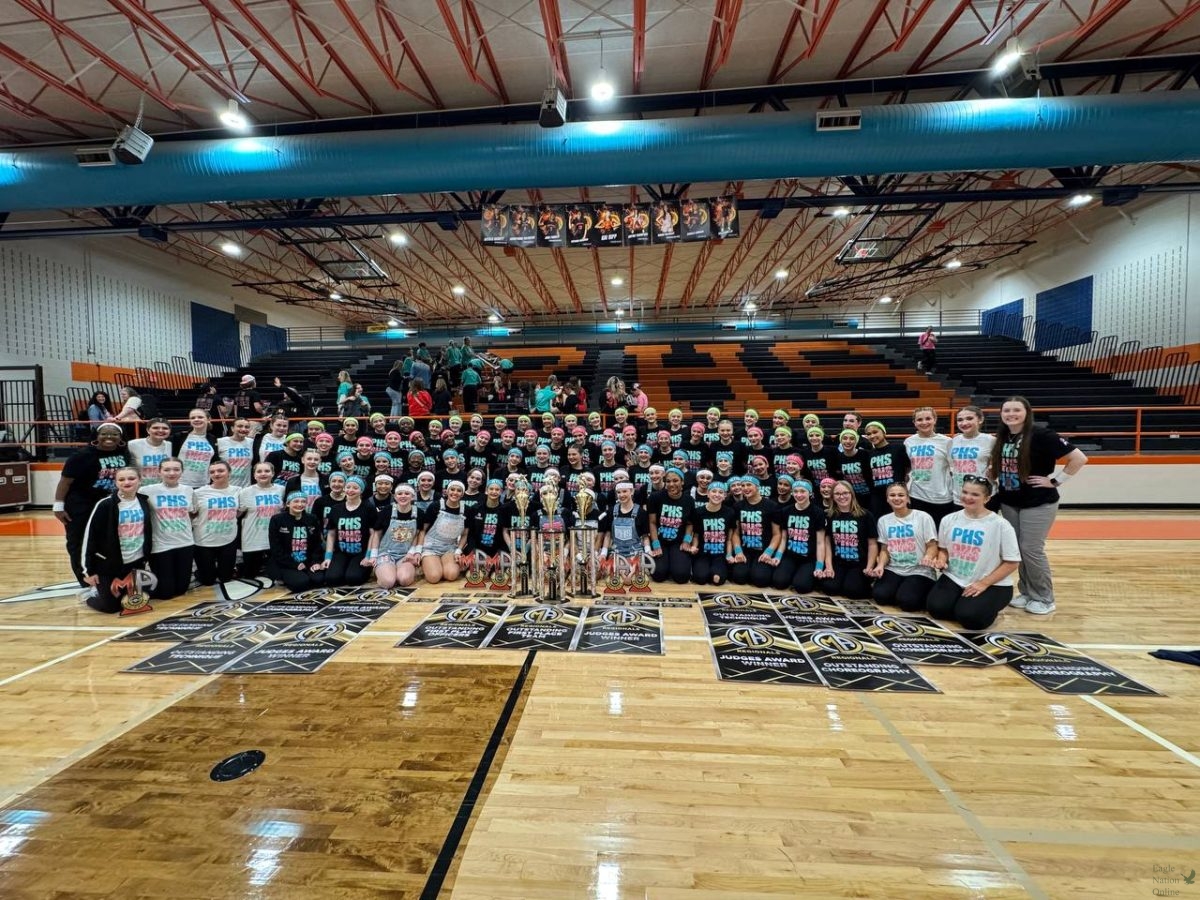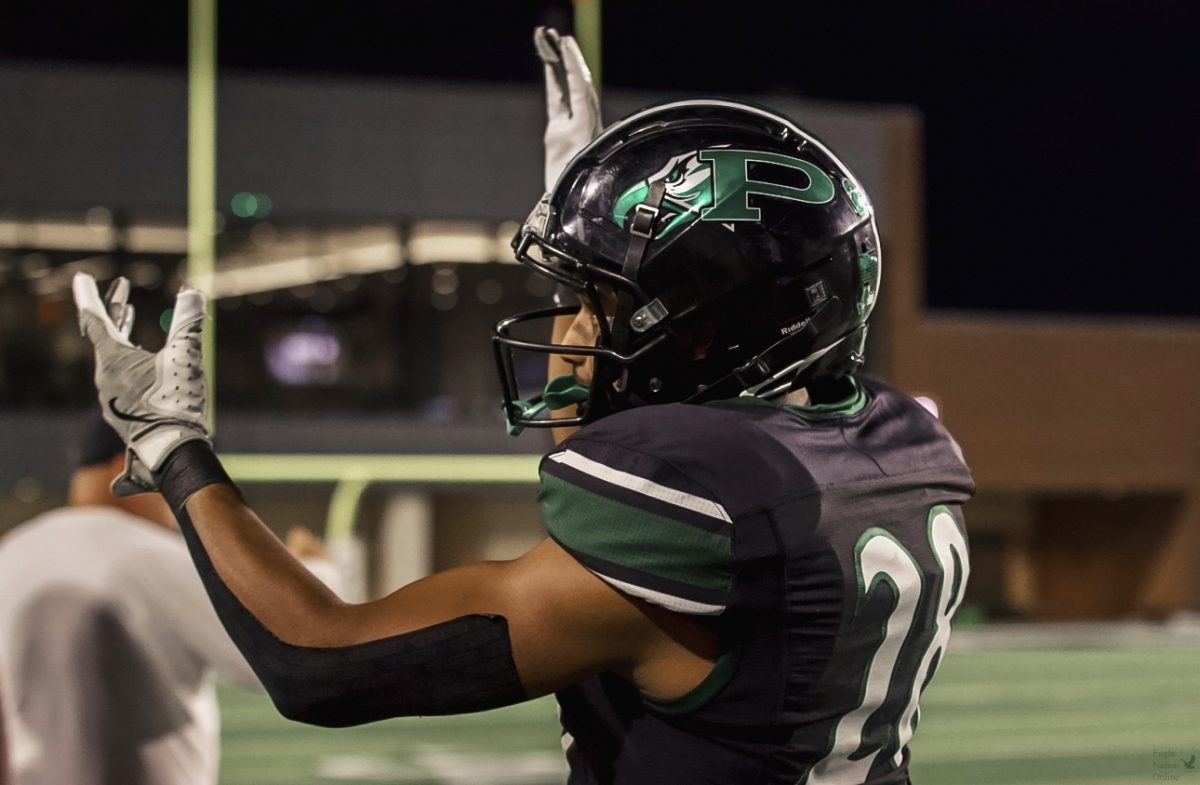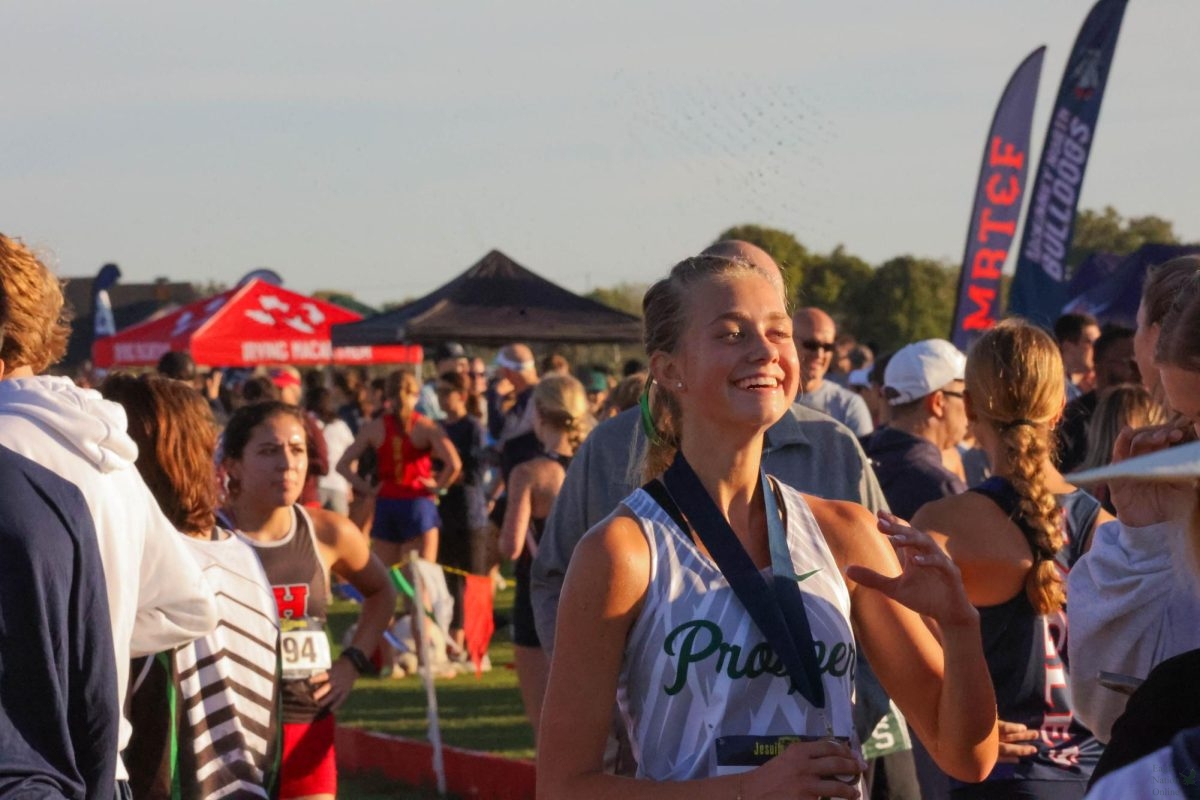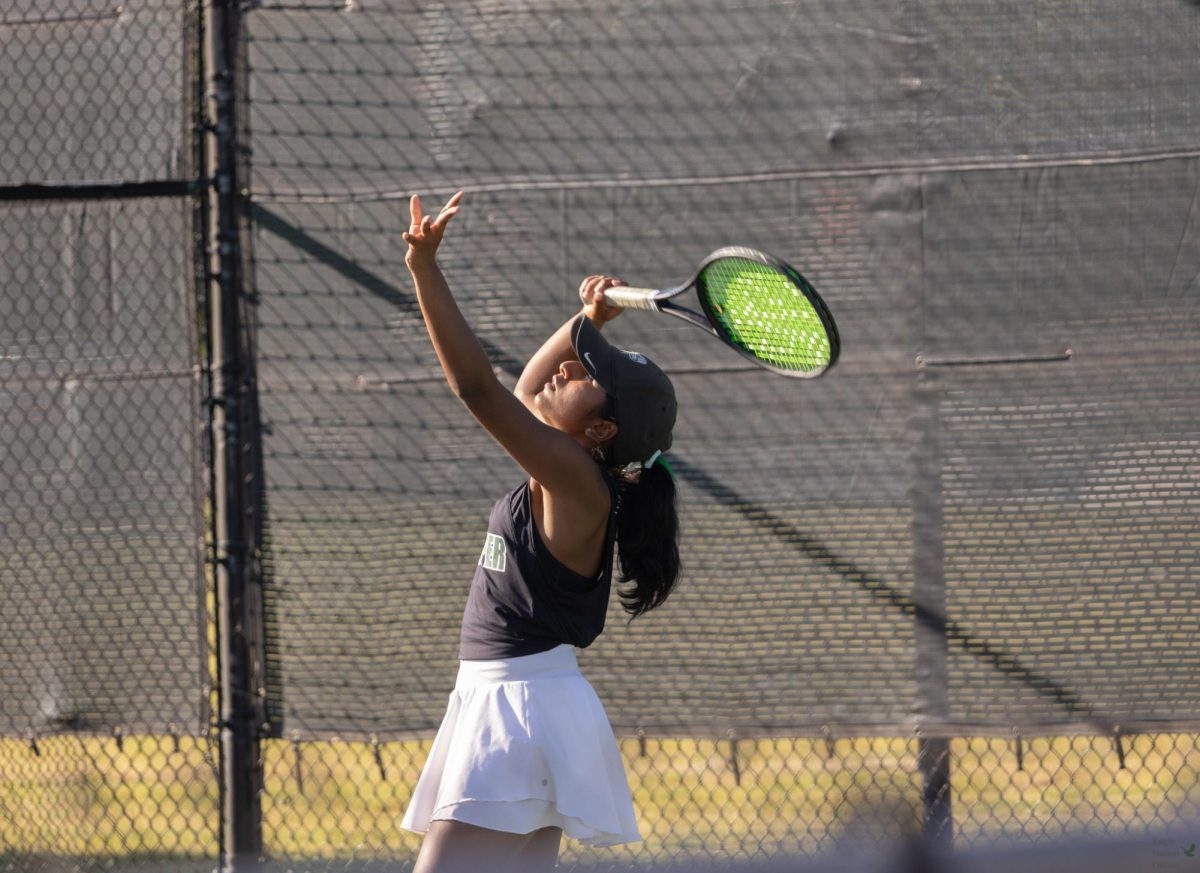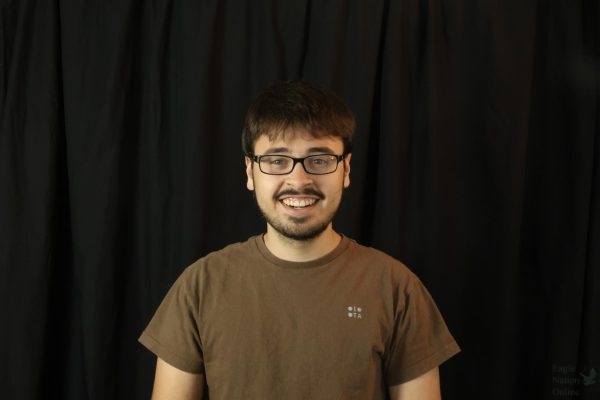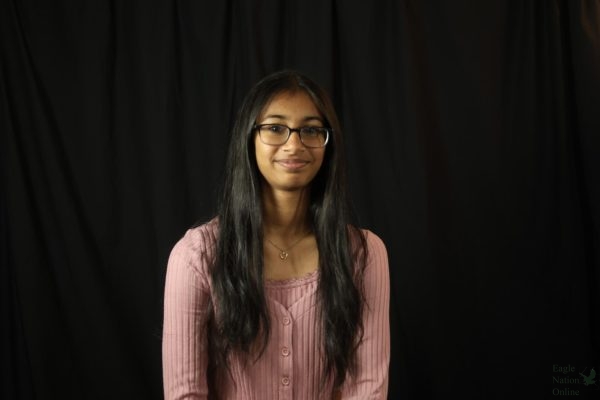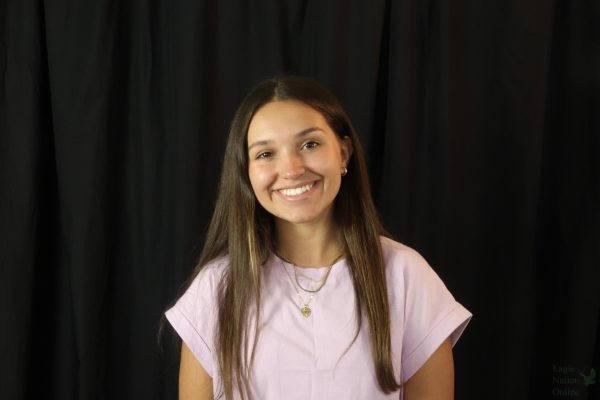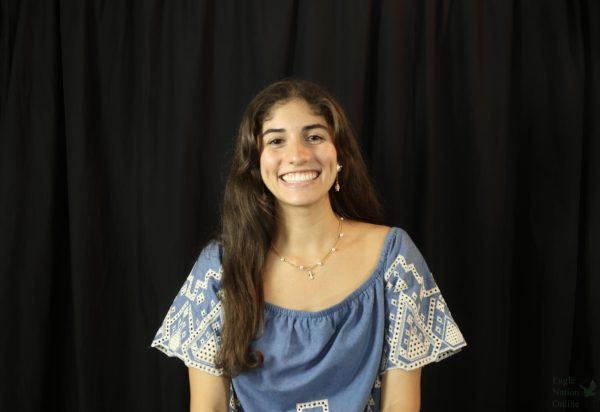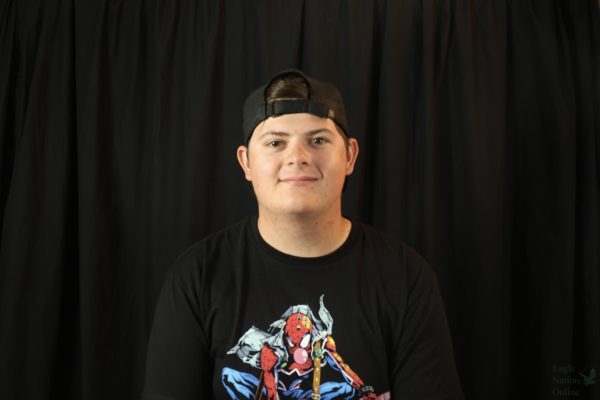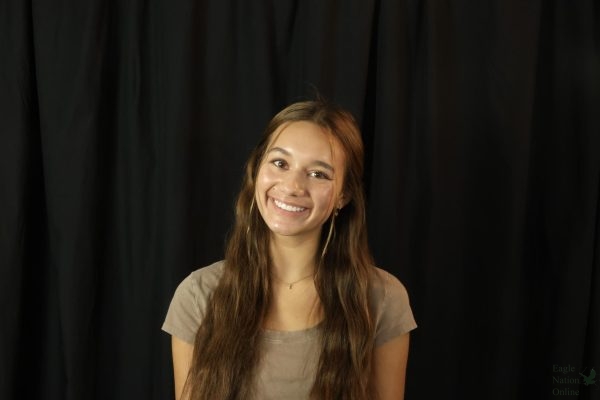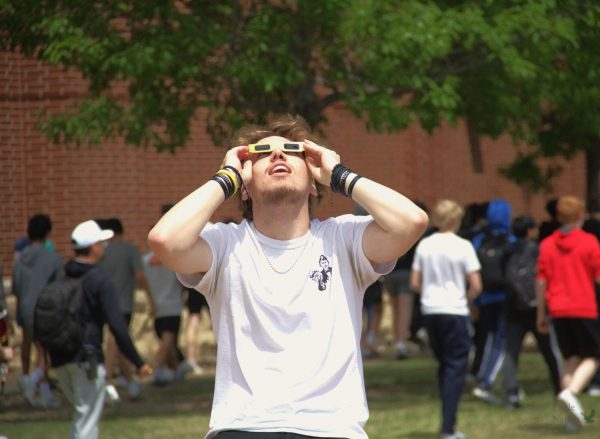
As students walk to the turf, junior Brandon Livingston gets a view of the partial eclipse. The partial eclipse took place before and after the total eclipse from 12:32 to 3:02 p.m. Nearly 12 cities in Texas were a part of the path of totality. (Srihitha Madepalli)
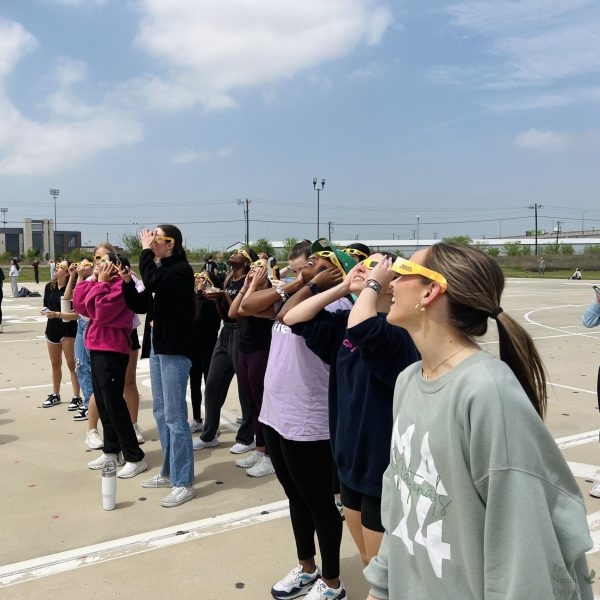
Gazing up at the sky, juniors Avery Mattox and Ana Garcia stand alongside coach Ashley Sharp. Students were instructed before going outside to wear their protective glasses when viewing the eclipse. Students were let out 10 minutes before the eclipse went underway. (Erica Deutsch)
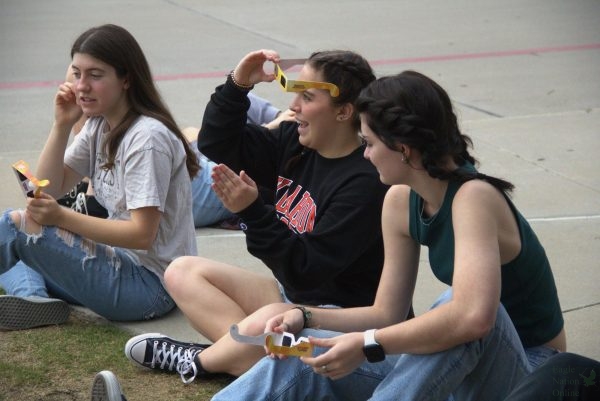
Looking down to the side, junior Lauren Owen joins her peers to watch the total solar eclipse of 2024. Students gathered around the school for 30 minutes to experience the total eclipse. Parts of Texas will be a part of the totality path again in 2078. (Srihitha Madepalli)
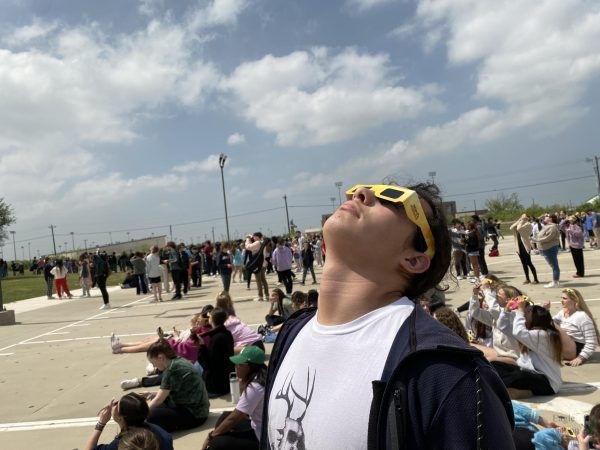
On the marching band slab, junior Walker Ford stares at the partial eclipse. Students were let out of class to experience this event. “I think it’s cool,” Ford said. “I mean it doesn’t happen all the time, so experience it while you can.” (Will Ligon)

As they prepare to witness the total solar eclipse, science teacher Laura White tests out her solar eclipse glasses alongside other science teachers. Some teachers and students created their own viewing areas around the school. “I was very excited, I ordered a new shirt and earrings to celebrate the occasion,” White said. “This was the first solar eclipse that I’ve been in the path of totality for. It was such an awesome experience to be with my biology team hanging out in the darkness of the full eclipse and feel the temperature drop around us.” (Sofia Ayala)
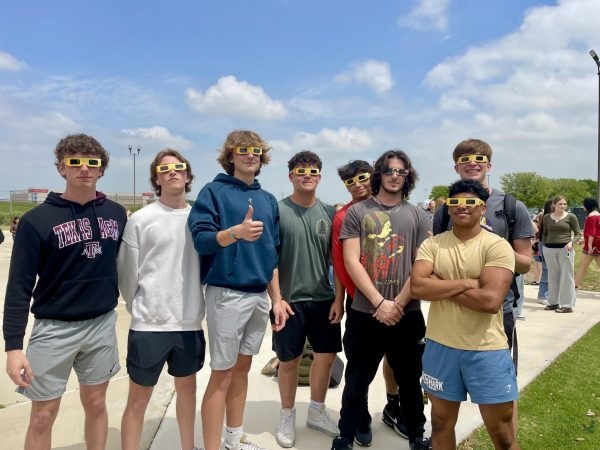
Side-by-side, juniors Walker Hassel, Noah Hendrickson, Davis Carte, Saxon Niese, David Androes, Tayvin Labbe, Leo Anguiano and Porter Pourciau prepare to watch the eclipse. At around 1:42 p.m., the sun was completely covered, darkening its pathway. “I was worried it would be cloudy, but we were able to see,” Carte said. “It was one of the coolest things I’ve seen.” (Isabel Multer)
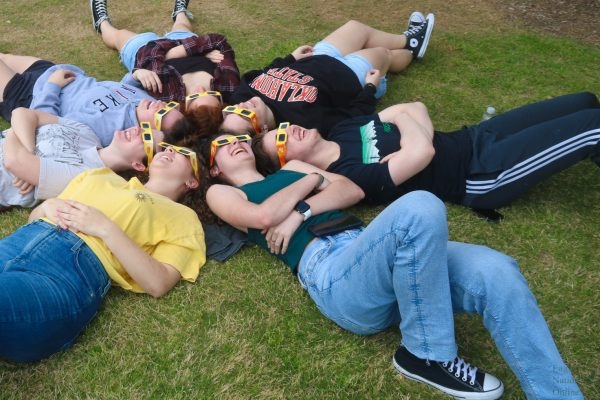
In a circle, GT American Studies students lay and look at the half-eclipsed sun. Teachers passed out protective eclipse glasses to students at the start of third period. “It was definitely a cool experience,” junior Jacob Piehl said. “It was crazy seeing how quickly the moon came over the sun and how dark everything was.” Seen in the photo, starting at the yellow shirt and working clockwise, are juniors Annabelle Nugent, Erica Smith, Savannah Westwick, Sarah Goddard, Lauren Owen, Jacob Piehl and Avery Parker. (Jake Radcliffe)

Just after the moment of totality, students prepare to leave the marching band slab. Students watched the eclipse from the slab or the practice football field, depending on their third period class. Those who didn’t want to go outside for the viewing could stay in the cafeteria. (Photo courtesy of Ryan Denham)
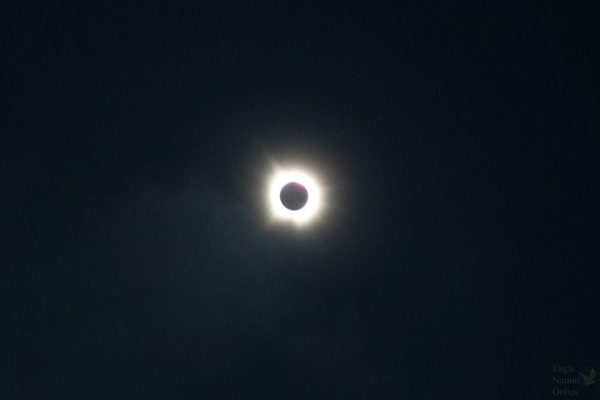
Using a Canon Rebel T6i camera, junior Jake Radcliffe captures the moment the eclipse reached totality. Teachers warned students that taking pictures of the sun without protection could damage their lens. “I was kind of afraid to capture the eclipse using the equipment I had on me,” Radcliffe said. “But, I took the risk to get a really cool shot. The camera ended up being undamaged.” (Jake Radcliffe)
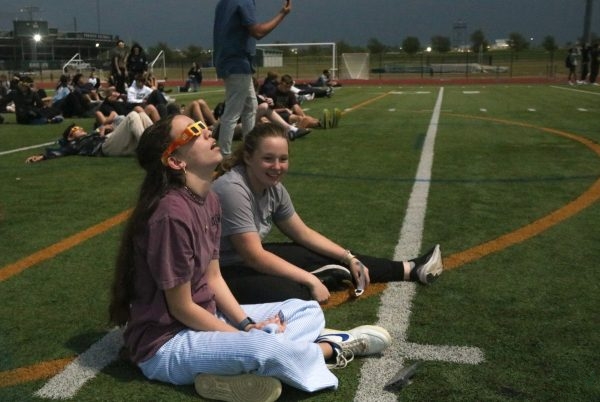
Alongside sophomore Kenna Boyd, sophomore Isabella Rodriguez stares into the eclipsing sun. The path of totality passed through 13 states throughout the U.S., including Texas. “I didn’t realize that you could look at the eclipse once it got into totality without the glasses on,” Rodriguez said. “So, when the moon completely covered the sun, Kenna kind of like swiped them directly off of my face. It was such a crazy thing to experience because it’s not going to happen again until 2044.” (Jake Radcliffe)















